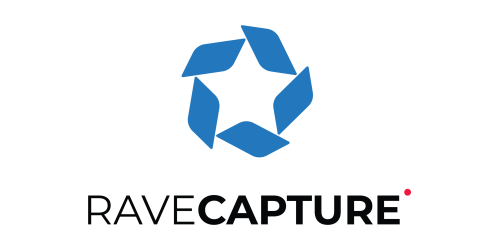
Understanding Domain Hijacking : Risks and Protection
Kevin TaylorShare
Domain hijacking poses a serious threat to businesses and website owners. As a leading provider of SSL Certificates, Trustico® helps organizations protect their domains through robust validation and security measures.
Our SSL Certificate solutions play a vital role in preventing unauthorized domain access and maintaining website security.
Understanding Domain Hijacking
Domain hijacking occurs when malicious actors gain unauthorized control of domain names by compromising domain registrar accounts or exploiting vulnerabilities.
This can lead to website defacement, e-mail interception, and loss of business reputation.
Trustico® SSL Certificates include rigorous domain validation processes that help verify legitimate domain ownership.
The consequences of domain hijacking can be severe, including revenue loss, damaged customer trust, and compromised sensitive data.
Organizations must implement strong security measures, including properly validated SSL Certificates, to protect their digital assets.
When domains are hijacked, attackers can redirect traffic to malicious websites, intercept sensitive communications, or deploy phishing campaigns using the trusted domain name.
These attacks can remain undetected for extended periods, causing significant damage to both the organization and its customers.
Implementing proper security measures, including Trustico® SSL Certificates with thorough validation processes, helps prevent these scenarios.
Common Domain Hijacking Techniques
Domain hijackers employ various methods to gain unauthorized control of domains.
Social engineering attacks target domain administrators or registrar employees to obtain access credentials through deception.
These sophisticated attacks bypass technical security measures by exploiting human vulnerabilities.
Trustico® SSL Certificate validation processes help verify that SSL Certificate requests come from legitimate domain owners, creating an additional verification layer.
Registrar account compromises represent another common attack vector. Weak passwords, lack of multi-factor authentication, or security vulnerabilities in registrar systems can allow attackers to gain access to domain management controls.
Once inside, they can change domain settings, including name servers and contact information. Trustico® SSL Certificates with Organization Validation (OV) or Extended Validation (EV) require additional verification steps that can help identify unauthorized domain control changes.
Domain expiration exploitation occurs when attackers monitor valuable domains for expiration and quickly register them when renewal lapses.
This opportunistic approach takes advantage of administrative oversights.
Trustico® SSL Certificate management systems include expiration monitoring that can alert domain owners to upcoming renewals, helping prevent accidental domain loss.
Prevention Through SSL Certificate Validation
Trustico® offers both Trustico® branded and Sectigo® branded SSL Certificates that provide essential domain validation.
Our Organization Validation (OV) and Extended Validation (EV) SSL Certificates require comprehensive verification of domain ownership and business legitimacy.
Domain validated SSL Certificates from Trustico® ensure that only authorized owners can obtain SSL Certificates for their domains. This validation process creates an additional layer of security against domain hijacking attempts.
The validation procedures for Trustico® SSL Certificates include multiple verification methods that confirm domain control.
These methods may include email verification to domain-associated addresses, DNS record modifications, or file-based validation through the domain's web server.
Each approach verifies that the SSL Certificate applicant has legitimate administrative access to the domain, helping prevent unauthorized SSL Certificate issuance.
For enhanced protection, Trustico® Organization Validation (OV) SSL Certificates verify both domain ownership and organizational identity.
This dual validation approach creates a stronger security barrier against domain hijacking by requiring attackers to compromise both domain controls and business verification processes.
The additional validation steps make it significantly more difficult for unauthorized parties to obtain valid SSL Certificates for hijacked domains.
Essential Security Measures
Beyond implementing Trustico® SSL Certificates, organizations should enable registry lock features through their domain registrars.
This critical security measure prevents unauthorized domain transfers and configuration changes by requiring additional verification steps before modifications can be made. Registry locks provide a fundamental layer of protection against many common domain hijacking techniques.
Implementing strong password policies and two-factor authentication for domain registrar accounts significantly reduces the risk of unauthorized access.
These authentication measures should apply to all accounts with domain management capabilities, including registrar accounts, hosting control panels, and DNS management systems.
Trustico® recommends using unique, complex passwords and modern authentication methods to protect these critical access points.
Regular monitoring of domain settings and SSL Certificate status helps detect potential hijacking attempts early.
Organizations should establish monitoring systems that alert administrators to any changes in domain configurations, name servers, or contact information.
Maintaining up-to-date contact information for domain administrators ensures that security alerts and renewal notices reach the appropriate personnel.
Outdated contact details can lead to missed notifications about suspicious activities or pending expirations.
Trustico® recommends reviewing and updating domain contact information regularly as part of a comprehensive security maintenance program.
Using secure DNS configurations with DNSSEC where possible adds cryptographic protection to domain name resolution processes. This security extension helps prevent DNS spoofing and cache poisoning attacks that can be used in domain hijacking attempts.
While not directly related to SSL Certificates, DNSSEC works alongside SSL Certificate validation to create a more comprehensive security posture.
SSL Certificate Management Best Practices
Trustico® recommends implementing robust SSL Certificate management procedures to enhance domain security. This includes maintaining an inventory of all SSL Certificates, monitoring expiration dates, and ensuring proper installation across all servers.
Implementing automated monitoring for SSL Certificate expiration prevents security gaps that could be exploited by attackers.
When SSL Certificates expire, websites display security warnings that can damage user trust. More importantly, expired SSL Certificates create opportunities for attackers to exploit the temporary security lapse.
Conducting regular audits of your SSL Certificate deployment ensures that all SSL Certificates are properly installed and configured.
Misconfigurations can create security vulnerabilities or cause browser compatibility issues that impact user experience.
Choosing the Right SSL Certificate Protection
Trustico® offers multiple SSL Certificate options to match different security requirements. Our experts can help determine whether Domain Validation, Organization Validation, or Extended Validation SSL Certificates best suit your needs.
All Trustico® SSL Certificates include industry-standard encryption and come backed by warranty protection. Our validation processes help ensure your domains remain secure and trusted by web browsers.
For organizations with multiple domains or subdomains, Trustico® offers Wildcard and Multi-Domain SSL Certificates that provide efficient protection across your entire web presence.
These SSL Certificate types simplify management while maintaining strong security, reducing the risk of overlooking domains that might be targeted for hijacking.
Extended Validation (EV) SSL Certificates provide the highest level of validation and visual trust indicators. The extensive verification process for these SSL Certificates makes them particularly effective against domain hijacking attempts, as they require thorough documentation of domain ownership and business legitimacy.
Trustico® recommends EV certificates for organizations handling sensitive data or conducting financial transactions.
Ongoing Security Maintenance
Maintaining strong domain security requires continuous monitoring and updates. Regular SSL Certificate renewals through Trustico® ensure uninterrupted protection and validation of domain ownership.
We recommend conducting periodic security assessments and updating domain protection measures as threats evolve.
Implementing a security training program for all personnel with domain management responsibilities helps prevent social engineering attacks. Staff should understand common domain hijacking techniques, recognize phishing attempts, and follow secure procedures for domain and SSL Certificate management.
Regularly reviewing domain security configurations ensures that protections remain effective against evolving threats. This includes checking registry lock status, verifying contact information accuracy, and confirming that SSL Certificate implementations follow current best practices.
Trustico® recommends scheduling these reviews at least quarterly as part of your ongoing security maintenance program.
Partner with Trustico® for Domain Security
Protecting your domains from hijacking requires a multi-layered security approach. Trustico® SSL Certificates form a critical component of this strategy by providing thorough validation and strong encryption.
Our range of SSL Certificate options ensures that organizations of all sizes can implement appropriate protection for their specific needs.
We can guide you through SSL Certificate selection, validation processes, and implementation best practices to strengthen your overall domain security posture.



